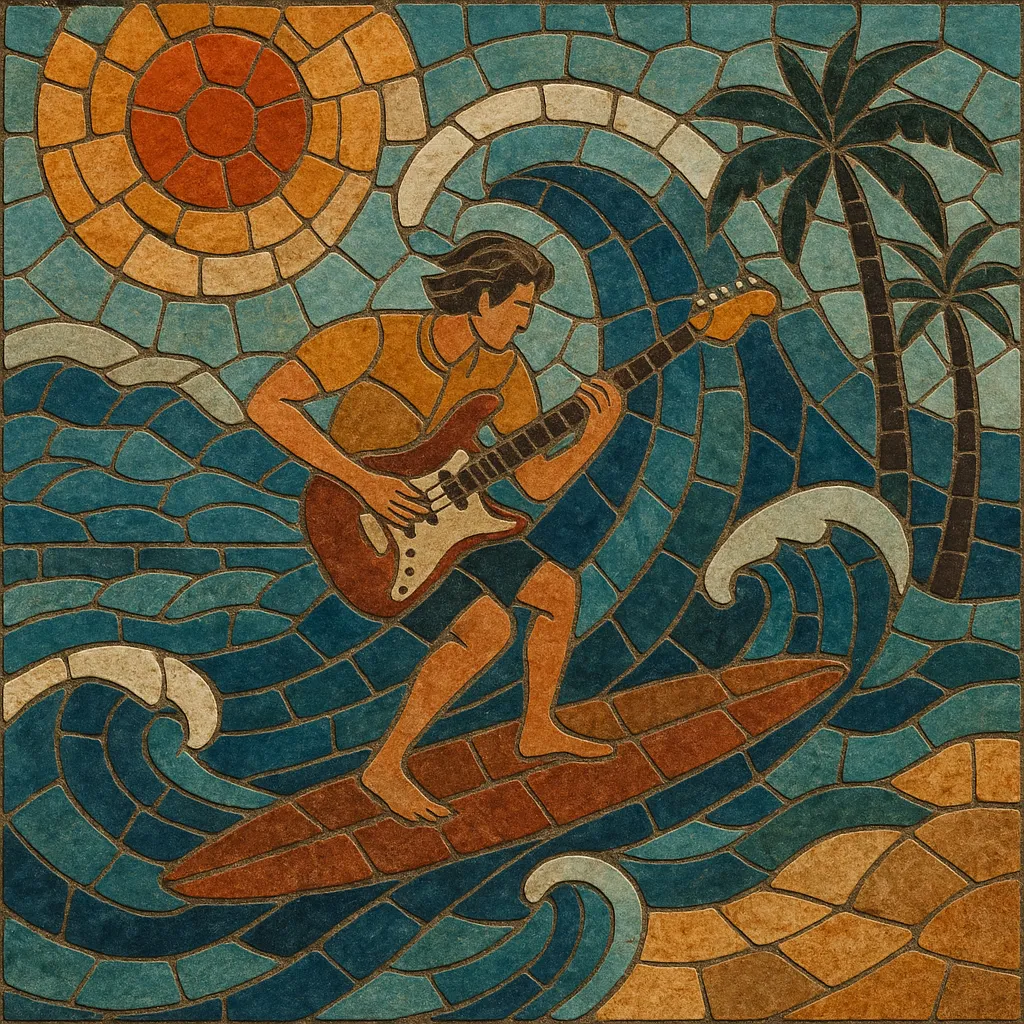Surf is a guitar-driven style of early 1960s popular music that evokes the sound and culture of ocean surfing. It is best known for its "wet" spring reverb, rapid tremolo-picked melodies, and bright single‑coil guitar tones that mimic the shimmer and surge of waves.
The genre includes both instrumental surf (Dick Dale, The Ventures) and vocal surf (The Beach Boys, Jan & Dean), the latter often pairing lush harmonies with lyrics about surfing, cars, and Southern California youth life. Harmonically it tends to use simple I–IV–V progressions, minor‑key modes for dramatic instrumentals, and singable hooks for radio‑friendly songs.
Beyond its beach imagery, surf's sonic signatures influenced film/TV "spy" cues and later rock subgenres, thanks to its distinctive timbre, energetic rhythms, and memorable riffs.
Surf coalesced in Southern California’s beach communities, drawing on instrumental rock and roll and rhythm & blues. Guitarist Dick Dale helped define the sound with aggressive, rapid down‑picking, Middle Eastern–inflected melodies (e.g., Misirlou), and heavy outboard spring reverb that gave guitars a "drip" reminiscent of crashing surf.
Instrumental hits like The Chantays’ Pipeline (1962), The Surfaris’ Wipe Out (1963), and The Lively Ones’ Surf Rider showcased twangy leads, tom‑driven drum patterns, and walking bass. In parallel, vocal surf acts such as The Beach Boys and Jan & Dean added doo‑wop–tinged harmonies and lyrics about surf culture and hot‑rodding, bringing the sound to mainstream pop charts.
The Ventures popularized the style worldwide and cemented the clean, single‑coil, Fender‑centric tone. Surf’s timbral palette (spring reverb, tremolo picking, modal riffs) bled into "spy" and action cues for film/TV and influenced bands far beyond California.
The British Invasion in 1964 shifted rock’s center of gravity, and surf’s chart presence receded. However, the sound persisted in regional scenes and experienced revivals: late‑1970s/1980s punk‑adjacent surf punk, 1990s reissues and new bands, and a major 1994 resurgence after Pulp Fiction reignited interest in classic instrumental tracks.
Surf’s signature sonics—reverberant guitars, riff‑centric instrumentals, and kinetic drum grooves—continue to shape garage rock, punk offshoots, and the enduring "spy/surf" soundtrack idiom.


